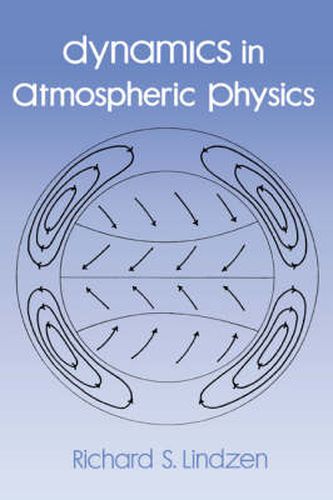Readings Newsletter
Become a Readings Member to make your shopping experience even easier.
Sign in or sign up for free!
You’re not far away from qualifying for FREE standard shipping within Australia
You’ve qualified for FREE standard shipping within Australia
The cart is loading…






Motion is manifest in the atmosphere in an almost infinite variety of ways. In Dynamics in Atmospheric Physics, Dr. Richard Lindzen describes the nature of motion in the atmosphere, develops fluid dynamics relevant to the atmosphere, and explores the role of motion in determining the climate and atmospheric composition. The author presents the material in a lecture note style, and the emphasis throughout is on describing phenomena that are at the frontiers of current research, but due attention is given to the methodology of research and to the historical background of these topics. The author’s treatment and choice of topics is didactic. Problems at the end of each chapter will help students assimilate the material. In general the discussions emphasize physical concepts, and throughout Dr. Lindzen makes a concerted effort to avoid the notion that dynamic meteorology is simply the derivation of equations and their subsequent solution. His desire is that interested students will delve further into solution details. The book is intended as a text for first year graduate students in the atmospheric sciences. Although the material in the book is self contained, a familiarity with differential equations is assumed; some background in fluid mechanics is helpful.
$9.00 standard shipping within Australia
FREE standard shipping within Australia for orders over $100.00
Express & International shipping calculated at checkout
Stock availability can be subject to change without notice. We recommend calling the shop or contacting our online team to check availability of low stock items. Please see our Shopping Online page for more details.
Motion is manifest in the atmosphere in an almost infinite variety of ways. In Dynamics in Atmospheric Physics, Dr. Richard Lindzen describes the nature of motion in the atmosphere, develops fluid dynamics relevant to the atmosphere, and explores the role of motion in determining the climate and atmospheric composition. The author presents the material in a lecture note style, and the emphasis throughout is on describing phenomena that are at the frontiers of current research, but due attention is given to the methodology of research and to the historical background of these topics. The author’s treatment and choice of topics is didactic. Problems at the end of each chapter will help students assimilate the material. In general the discussions emphasize physical concepts, and throughout Dr. Lindzen makes a concerted effort to avoid the notion that dynamic meteorology is simply the derivation of equations and their subsequent solution. His desire is that interested students will delve further into solution details. The book is intended as a text for first year graduate students in the atmospheric sciences. Although the material in the book is self contained, a familiarity with differential equations is assumed; some background in fluid mechanics is helpful.